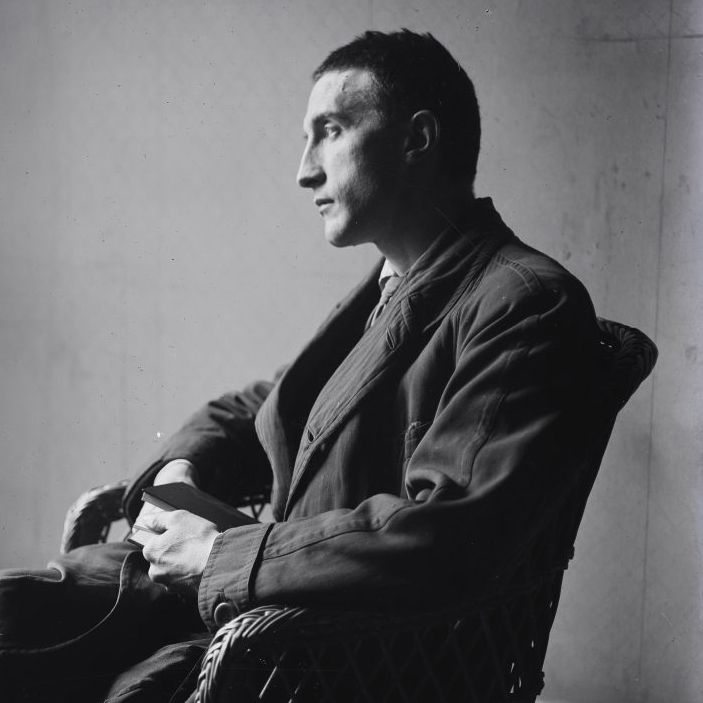Marcel Duchamp
“An ordinary object [could be] elevated to the dignity of a work of art by the mere choice of an artist.”
Marcel Duchamp changed the course of art history with his 1913 introduction of readymades—mundane, mass-produced objects recontextualized within the space of art. These iconoclastic works posed a challenge to the significance of originality, the definition of authorship, and the very nature of the work of art. By the First World War, Duchamp had dismissed the work of his peers as “retinal” art and sought to intellectualize art by integrating irony, satire, puns, and paradox. He was variously associated with the Cubist, Dada, and Surrealist movements, and his work anticipated Pop, Minimalism, and Conceptualism.
Born Henri Robert Marcel Duchamp in Normandy, France, Duchamp studied painting at the Académie Julian, Paris until 1905. His first exhibition, at Paris’s Salon des Humoristes in 1907, featured caricature drawings, and he presented Post-Impressionistic paintings and drawings in the Salon des Indépendants and Salon d’Automne, Paris, in 1909. He met his lifelong friend Francis Picabia the following year. In 1912, Duchamp painted Nude Descending a Staircase (No. 2), reflecting an ambivalent relationship with Cubism; the painting was rejected by the Salon des Indépendants, Paris, and sparked controversy at the New York Armory Show, establishing his reputation as a provocateur. He soon created his first readymade, Bicycle Wheel(1913), and began chance operations in such works as 3 Standard Stoppages (1913–14). In 1915 he visited New York, joining the circle of poet and collector Walter Arensberg and meeting Man Ray, with whom he would in 1920 found the Société Anonyme. He initiated his seminal glass construction The Bride Stripped Bare by Her Bachelors, Even (The Large Glass) (1915–23). In 1917, his readymade Fountain, a porcelain urinal signed with the pseudonym R. Mutt,was rejected from the Society of Independent Artists, New York. In 1919, he created L.H.O.O.Q., drawing facial hair onto a reproduction of Leonardo da Vinci’s Mona Lisa, and 1920 marked the first appearance of Duchamp’s alter ego Rrose Sélavy.
Duchamp mounted his first solo exhibition at the Arts Club of Chicago in 1937. In 1941, he signed the first edition of Boîte-en-Valise, a “portable museum” in a suitcase that contains miniatures and reproductions of his work. He settled permanently in New York in 1942, collaborating with André Breton and exhibiting with Surrealist émigrés. In 1946, he began Etant donnés, an assemblage he would produce secretly for the next twenty years. In the 1960s, a younger generation of artists recognized Duchamp’s critical contributions, and he was honored with retrospectives in America and Europe, including those at the Pasadena Museum of California Art (1963); Tate, London (1966); Philadelphia Museum of Art (1973); Centre Pompidou, Paris (1977); and Palazzo Grassi, Venice (1993). His work resides in the collections of the Museum of Modern Art, New York; Philadelphia Museum of Art; Art Institute of Chicago; Menil Collection, Houston; Tate, London; Centre Pompidou, Paris; and Israel Museum, Jerusalem, among numerous others.
